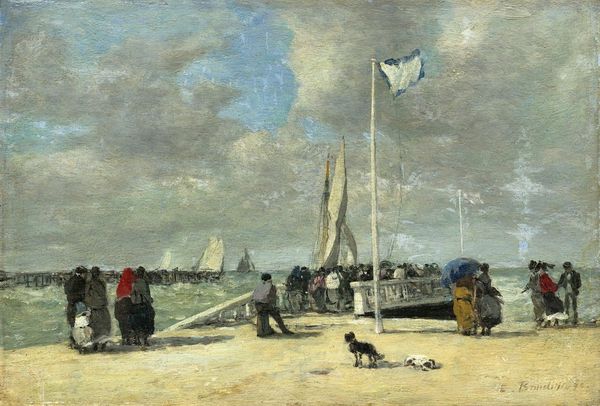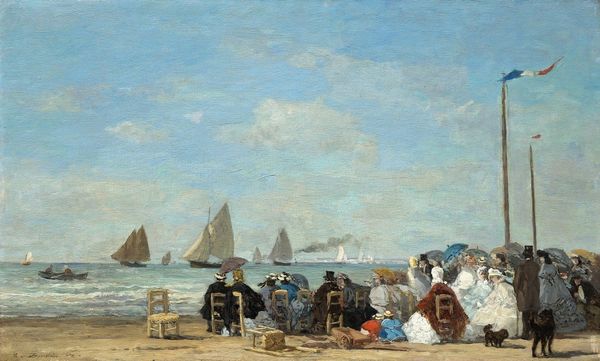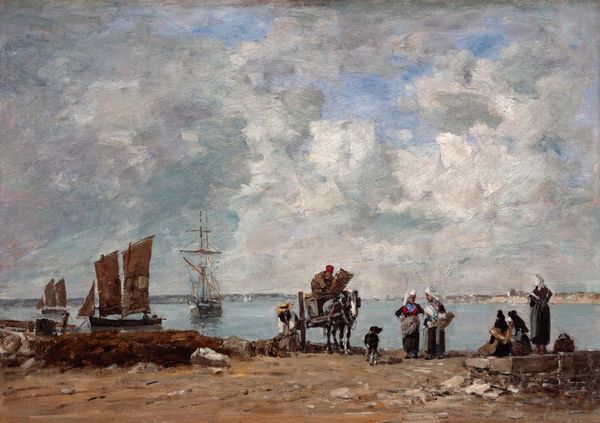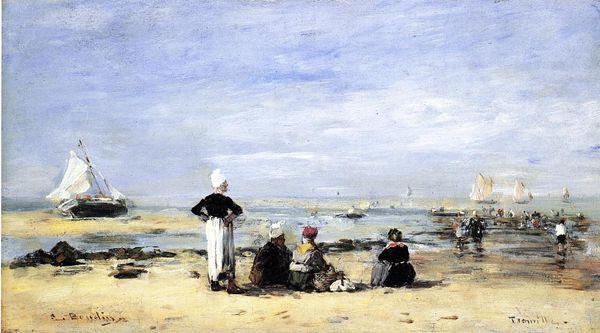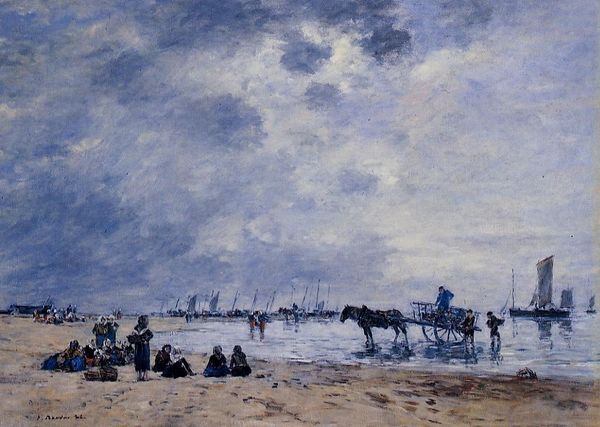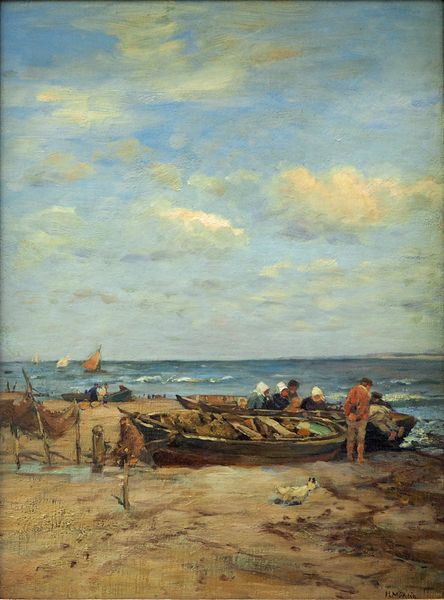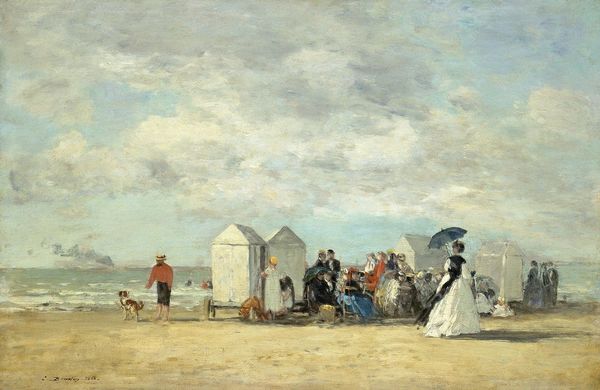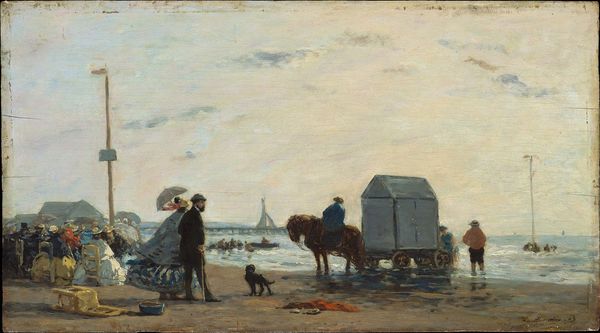
plein-air, oil-paint
#
impressionism
#
plein-air
#
oil-paint
#
landscape
#
oil painting
#
genre-painting
#
realism
Copyright: Public Domain: Artvee
Editor: Here we have Eugène Boudin's "Beach at Trouville," painted around 1864-1865 using oil paints. It really captures a sense of leisure, a moment of bourgeois life. How do you interpret this work? Curator: Boudin gives us a glimpse into the burgeoning leisure culture of the Second Empire. Look at the clear separation of space – the fashionable figures in the foreground, the working boats in the distance. How does this division reflect broader social inequalities of the time? Editor: It's like two different worlds coexisting in the same space, but totally separate. Were beaches becoming a site of class performance? Curator: Exactly. This painting is not just a depiction of a pleasant day at the beach; it’s a document of a changing society, grappling with industrialization, class identity, and new forms of leisure. Who has the privilege to *leisure*? Consider also the gendered element of this scene: the women, constrained by their clothing, largely observe, while the implied male gaze is invited. Editor: That's a great point! I hadn’t thought about how the beach becomes a stage for these social dynamics and power structures, not just a place for recreation. Curator: Boudin’s focus on capturing light and atmosphere, what would become a cornerstone of Impressionism, served to highlight rather than hide these tensions. What’s visible and what's obscured? Whose experiences are centered and whose are marginalized in this supposedly "peaceful" scene? Editor: I see the painting in a completely different light now, understanding it as a mirror reflecting complex societal issues rather than simply a beautiful landscape. Thank you! Curator: Absolutely, thinking of art as actively shaping how we perceive the world opens up richer understandings.
Comments
No comments
Be the first to comment and join the conversation on the ultimate creative platform.

